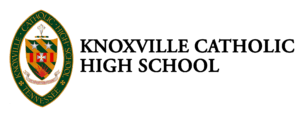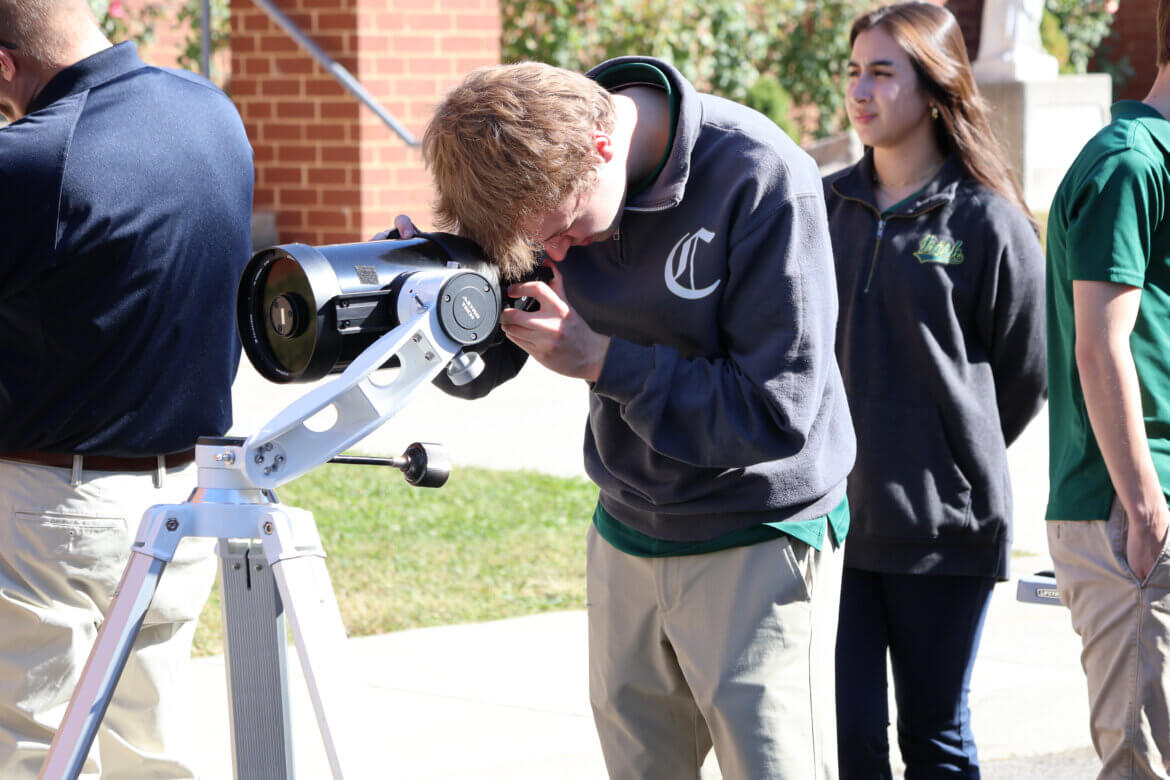A new school year always brings familiar sights and sounds to Knoxville Catholic. There’s a buzz of excitement as students and teachers return and reconnect. But this year, there’s a new buzz you might have heard – the buzz of drones flying down the hallway! On October 2nd, students in the new Aerospace Education CP course flew indoor drones through an obstacle course set up in the upper hallway of the B-building. The new teacher, Mr. Dave Wells, trained the students in how to fly the drones. “Drones are becoming an important part of aviation, and once you’re 16 years old you can get your Remote Pilot Certificate from the FAA and become a commercial drone pilot,” he explained. “It can become an easy way to have fun and make money.”
Aerospace Education is a new elective course for juniors and seniors. “The idea for the course came to me a couple of years ago,” stated Mr. Wells. “My two children graduated from Knoxville Catholic a few years back. I knew that an Oceanography course was offered as an elective to juniors and seniors, and I approached Dr. Prater about offering an Aerospace course as well.” As the schedule for the 24-25 academic year had already been established, Dr. Prater expressed interest in offering it this year.

Mr. Wells’ interest in aerospace began at an early age. “I grew up in a small town in Mississippi, near the Stennis Space Center on the Mississippi Gulf Coast. As a boy, I could hear the engine tests for the rocket engines that took us to the Moon on the Apollo Saturn V rocket. Those engines would shake the window-panes in our house from over 10 miles away!” He recalled that his earliest historical memory was the night of July 20, 1969 – the night of the first Moon landing. “I was five years old, and my mother woke me up so that I could join the whole family in watching Neil Armstrong and Buzz Aldrin walk on the Moon. I remember my older brothers had a telescope, and we went outside in the cool summer night and pointed it up to the Moon to see if we could spot them!” Watching the Apollo missions as a child planted in him a life-long interest in space exploration that remains to this day.
He also developed a strong interest in aviation during his youth. “When I was 13 years old, I joined the Civil Air Patrol as a cadet. CAP is the civilian auxiliary of the US Air Force. My older brothers had joined the Air Force, and that’s how I learned about it. As a cadet, I learned about airplanes, the history of aviation, air navigation, and a lot of the subjects you learn in flight school. I’ll never forget my first orientation flight on a CAP aircraft,” said Mr. Wells. “I was 13 years old, sitting in the co-pilot’s seat, and the pilot gives me the controls and told me to maintain a particular heading. I was so excited – and nervous! But it’s a memory I’ll always cherish.” Although he did not have the opportunity to obtain a private pilot’s license, his interest in aviation continued into high school as an Air Force Junior ROTC cadet, while simultaneously remaining a CAP cadet (he earned the highest cadet achievement, the Spaatz Award, the CAP equivalent of the Eagle Scout Award).
His interest in aerospace was renewed in 2017, when he attended a very special seminar at the Vatican Observatory in Tucson, AZ. “At the time, I was the Director of Faith Formation at the Cathedral of the Most Sacred Heart of Jesus,” recalled Mr. Wells. Father David Boettner, the Rector, told Mr. Wells of a week-long “Faith and Astronomy Workshop” offered by Brother Guy Consolmagno, SJ and the Jesuits at the Observatory. “I was very interested, and I immediately applied. I was thrilled to be accepted. That week in Tucson changed my life – it set my heart on fire with a passion for astronomy. I had taken a year of astronomy in college, and I continued to be interested in space exploration. But learning from professional astronomers, from both the Observatory and the University of Arizona, opened my eyes to the mystery and the beauty of the Cosmos that I had never encountered before,” he explained.
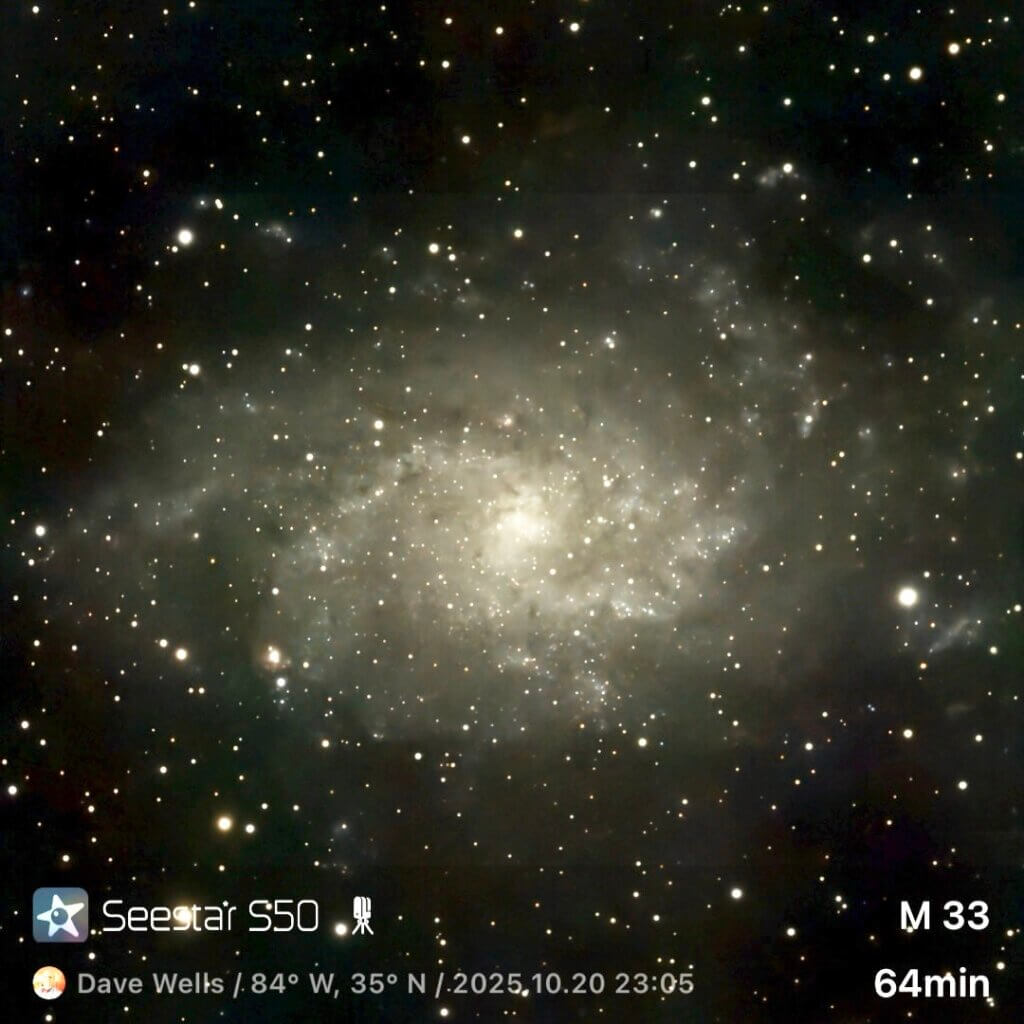
– Dave Wells
That experience in Tucson eventually led Mr. Wells to become an amateur astronomer, and as a member of his local astronomy club he began offering public outreach programs on stargazing, astronomy, and space exploration at local libraries. These outreach efforts eventually led him back to Civil Air Patrol, where he had the opportunity to share his knowledge and his passion with CAP cadets. “I became the External Aerospace Education Officer for the Tennessee Wing,” Mr. Wells said. “In this role, I work to promote aerospace education in schools through a special program we have for teachers. I met with several of the faculty and staff at St John Neumann Middle School in 2024, and we planned a day-long aerospace event for middle school students called “STAR EX” – focusing on the Exploration of Space, Telescopes, Astronomy, and Rocketry. We brought in guest speakers such as university professors, NASA Ambassadors, and retired astronauts to talk to the students about their opportunities in aerospace and STEM careers. The program was a great success, and we were invited to offer it again in April of this year – where we were able to join a Zoom call with the Chief Scientist at the NASA Jet Propulsion Laboratory and Brother Guy Consolmagno.”
Mr. Wells explained that it was his efforts to promote aerospace education to high school students that led him to approach Dr. Prater and Mr. Sompayrac. “There’s a growing need for pilots, air traffic controllers, engineers, and everyone involved in aviation; there are also growing opportunities in commercial space operations, satellites, and rocketry as Elon Musk and Jeff Bezos and others are proving each day,” noted Mr. Wells. “And the incredible discoveries we are making in astronomy with advanced telescopes, of galaxies at the edge of the observable universe, as well as exoplanets orbiting other stars – over 6,000 now and counting – indicate that we are on the cusp of a new Golden Age of Astronomy. It’s an exciting time to study aerospace.”
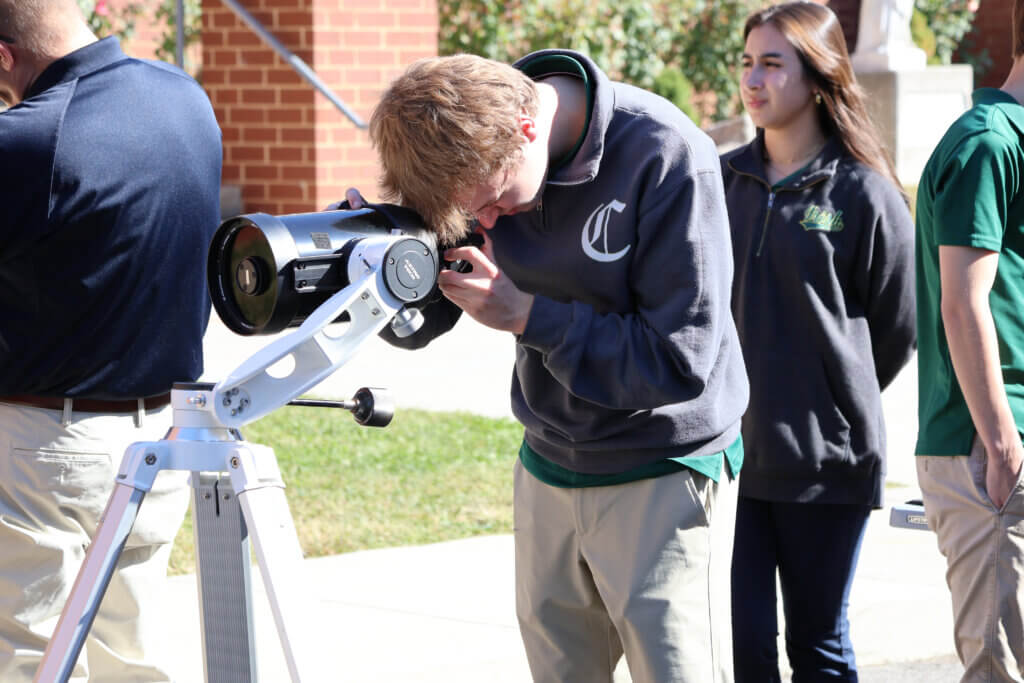
The first quarter of the Aerospace Education course focused on aviation, including the history and future of aviation. The second quarter is taking a deep dive into astronomy and space exploration. “We’re going to hopefully not just study the stars, but actually look at them one night at a campus star party before the end of the semester,” Mr. Wells recently announced to his students. And as we prepare to send astronauts back to the Moon next year for the first time since the Apollo missions, Mr. Wells (who was selected as a NASA Solar System Ambassador earlier this year) is assigning a project focusing on each of the Apollo missions. He has arranged a special Zoom call on December 5th with Apollo 13 astronaut Fred Haise, the last surviving crew member of NASA’s “successful failure.”
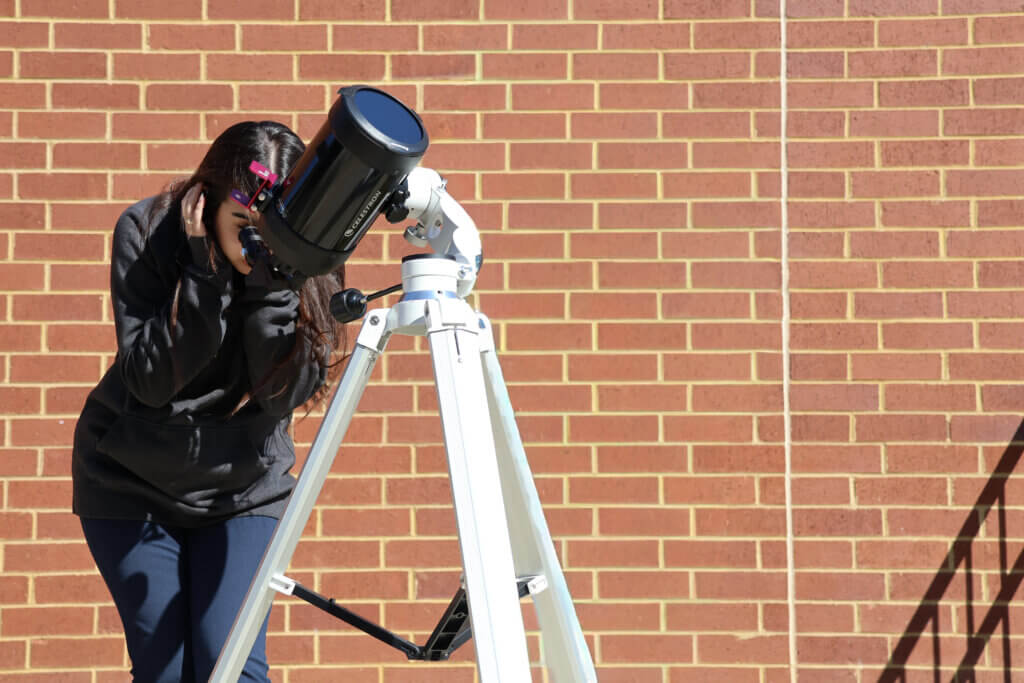
“I hope to ignite the imagination of my students,” Mr. Wells reflected. “We are going back to the Moon in the next few years. Eventually, we will develop the technology to safely send humans to Mars. The first person to take that giant leap and set the first foot on the Red Planet is alive today, and it may be someone from their generation – maybe even one of them. From the skies to the stars, the future of aerospace is limitless.”
Natalie Rivera, a junior at KCHS, says, “I love anything about astronomy, and learning about astronomy in a school environment is very exciting. In class, we’ve started learning about the Apollo missions. One thing I’m looking forward to is our guest speaker who is a retired astronaut from one of the Apollo missions.” Senior Charlie Chady adds, “We get to do cool stuff outside the classroom, like look at the sun through a telescope. I like how hands-on the class is.” One thing is for certain—this course is an amazing science elective that breeds curiosity and wonder!
